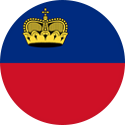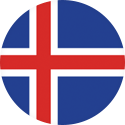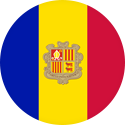Worldwide broadband speed league 2021
A global league table of internet network speeds derived from over 1.1 billion speed tests taken in the 12 months up to 30 June 2021 and spanning 224 countries.
Interactive map
Using the map
Countries are colour-coded by the average broadband network speed measured there. You can see at a glance that Western Europe and North America dominate the upper speed bands. Meanwhile, the African continent, South America, the Near East and Asia make up the lion's share of landmass where network speeds are slowest.
Hovering over an individual country will bring up its associated data. This includes country name, its ranking out of the 224 countries measured, its mean download speed, the number of unique IP addresses tested, the total number of tests and how long it takes to download an HD movie of 5GB in size.
Why some countries are missing data
Countries where fewer than 100 measurements could be taken during the sample period were excluded from the study and therefore from the map. You can still see the data for these countries if you wish – they are included in the 'Excluded countries' tab of the downloadable data. However, due to the small sample size the numbers are deemed unreliable.
This year's excluded countries are: Norfolk Island, Antarctica, U.S. Minor Outlying Islands, Niue, Heard Island and McDonald Islands, South Georgia and the South Sandwich Islands, North Korea, Cocos [Keeling] Islands, French Southern Territories, Montserrat, Falkland Islands, Tuvalu, Bouvet Island, Tonga, Nauru, Christmas Island, Tokelau, Western Sahara, Cook Islands, British Indian Ocean Territory, Central African Republic, Wallis and Futuna, and Kiribati.
Related research
Cable.co.uk also undertakes annual tracking studies covering the cost of 1GB of mobile data in over 200 countries, and the cost of broadband packages in over 200 countries. In August of 2020, we also released an in-depth report on how COVID-19 lockdown periods have affected global network speeds.
Highlights
Here is a quick look at some of the highlights unearthed in the study.

#1. Jersey
Jersey is the first jurisdiction in the world to make pure fibre (FTTP) available to every broadband user. Jersey's shift from second to first shows that uptake has been healthy.

#2. Liechtenstein
98% of Liechtenstein's near-40,000 population are internet users (compared to 95% in the UK, or 6% in Chad). The population enjoys excellent connectivity with fast, reliable provision.

#3. Iceland
Iceland's promise to bring at least 100Mbps to 99.9% of its population by the end of 2021 appears to be bearing fruit. It has shot up three more places this year to third place from sixth.

#4. Andorra
92% of Andorrans are internet users, and the country enjoys excellent connectivity. With a population of just 77,000 and an area of just 468km squared, infrastructure is both fast and modern.
The fastest and slowest countries in the world for broadband speed
Here we take a closer look at the five fastest and slowest countries in the world in terms of average internet download speeds.
Countries in the world with the slowest internet
The five countries in the world with the slowest network speeds are Turkmenistan (0.50Mbps), Yemen (0.68Mbps), Ethiopia (1.20), Guinea-Bissau (1.24Mbps), and Equatorial Guinea (1.30Mbps).
Three of the bottom five are located in Sub-Saharan Africa, one in Near East and one in CIS (Former USSR). All of these countries suffer from underdeveloped network infrastructure and low uptake of digital services among their populations.
Countries with the fastest internet
The five countries with the fastest internet in the world are Jersey (274.27Mbps), Liechtenstein (211.26Mbps), Iceland (191.83Mbps), Andorra (164.66Mbps) and Gibraltar (151.34Mbps).
It will be immediately striking to most that all of these countries share similarities. All five are within Western Europe and all are either very small or they are island nations. It is much easier to roll out FTTP full fibre broadband and 5G mobile internet to a smaller population and/or across a smaller area.
Global average broadband speed continues to rise sharply
Tracking broadband speed measurements in 224 countries and territories (221 last year) across multiple 12-month periods has allowed us to generate an overall average speed for the globe and to see how this number changes over time. The good news is that the global average speed continues rising fast.
The average global broadband speed measured during 2017 was 7.40Mbps. The average global broadband speed measured during 2018 was 9.10Mbps – a rise of 23.35%. In 2019, the average speed measured was 11.03Mbps – a further rise of 20.65% over the previous year. Last year (2020), the average rose again by another 90% to 24.83Mbps, though it should be noted that much of this rise can be attributed to upgraded measurement tools.
This year the global average speed rises again by another 20% to 29.79Mbps.
For more information on the 2020 M-Lab platform upgrade, please refer to the downloadable methodology document.
Regions
Here we take a closer look at the average speeds across 13 global regions. Each of the numbers in the following diagram is the mean speed in Mbps for each of these regions, ordered by fastest to slowest.
Asia (excl. Near East)
27 countries were measured in the Asia (ex. Near East) region, which clocked in a regional average speed of 29.11Mbps. The fastest average speeds were measured in Macau (128.56Mbps, 7th), Singapore (97.61Mbps, 11th), and Japan (96.36Mbps, 13th). Democratic Republic of Timor-Leste (1.33Mbps, 219th), Afghanistan (1.41Mbps, 217th), and China (2.06Mbps, 209th) were the slowest in the region, with Timor-Leste and Afghanistan finding themselves in the bottom ten countries in the world.
Baltics
The Baltics, comprising three qualifying countries, ranked entirely within the top 50, and have an overall regional average of 68.06Mbps. Estonia fared best in 22nd place overall and with an average speed of 84.72Mbps. Lithuania (56.17Mbps, 37th), and Latvia (63.28Mbps, 33rd) followed behind fairly closely.
Caribbean
Overall the Caribbean region fared well for what are essentially island nations, with three of its 27 countries featuring in the top 50 fastest countries in the world. Overall, the region offers a respectable 26.40Mbps on average. At the faster end, Cayman Islands (71.47Mbps, 27th), Aruba (70.66Mbps, 28th), and Barbados (55.92Mbps, 38th) led the way, while Cuba (2.92Mbps, 196th), Sint Maarten (6.15Mbps, 170th), and Antigua and Barbuda (8.69Mbps, 141st) were the slowest.
Central America
Most Central American countries found themselves toward the middle of the league table. The region as a whole has an average speed of 16.03Mbps, but there are winners and losers in the region. The fastest average speeds can be found in Panama (30.58Mbps, 72nd), Belize (23.12Mbps, 79th), and Costa Rica (19.02Mbps, 97th). Meanwhile, Honduras (7.17Mbps, 159th), Nicaragua (9.75Mbps, 134th), and Guatemala (9.85Mbps, 133rd) all performed relatively poorly.
CIS (Former USSR)
Of the 11 CIS (former USSR) nations in the table, most can be found from the middle of the table downwards. The region had an average speed of 12.87Mbps. The top three fatest nations in the region were Russian Federation (35.73Mbps, 66th), Ukraine (25.26Mbps, 77th), and Belarus (19.86Mbps, 92nd). The slowest countries in the region were Turkmenistan (also slowest in the world – 0.50Mbps, 224thth), Tajikistan (1.82Mbps, 211th) and Kazakhstan (5.83Mbps, 173rd). Both Tajikistan and Turkmenistan were among the slowest ten places in the world.
Eastern Europe
There are 16 qualifying countries in the Eastern Europe region, all of which are in the top half of the table, with one (Hungary) making it into the top ten, and six others in the top 50. Overall the region averages 46.22Mbps. The fastest three were Hungary (104.07Mbps, 10th), Romania (67.40Mbps, 29th) and Slovenia (67.20Mbps, 30th). The slowest three were North Macedonia (15.38Mbps, 107th), Albania (19.36Mbps, 96th), and Kosovo (22.21Mbps, 81st).
Near East
The 15 countries in the Near East measured for this year's speed league table span the middle to the bottom of the table. The average for speed for the region is 15.38Mbps. The fastest countries were Israel (34.97Mbps, 67th), United Arab Emirates (29.90Mbps, 73rd) and Cyprus (28.30Mbps, 76th). The slowest were Yemen (0.68Mbps, 223rd), Syrian Arab Republic (1.67Mbps, 213th) and Palestine (3.65Mbps, 190th).
Northern Africa
Northern Africa recorded the lowest overall internet speeds as a collective region, with all six qualifying countries in the bottom half of the table. Mauritania (2.54Mbps) recorded the slowest speed in 203rd place, followed by Algeria (3.08Mbps, 194th), and Libya (3.73Mbps, 188th). Morocco (10.33Mbps, 129th), Tunisia (7.46Mbps, 153rd), and Egypt (6.94Mbps, 162nd) offered the fastest speed in the region.
Northern America
Five countries were measured in Northern America, all of which were in the top quarter of the table. The region as a whole has an average speed of 71.68Mbps. Bermuda (96.54Mbps, 12th) and the United States (92.42Mbps, 14th) led the region with impressive averages. Meanwhile, Canada (79.96Mbps, 24th), Saint Pierre and Miquelon (47.92Mbps, 48th), and Greenland (41.56Mbps, 52nd) were the slowest in the region, but none of them were 'slow' compared to the rest of the world.
Oceania
Of the 15 qualifying countries in Oceania, most were in the bottom half of the speed table. The region has an overall average of 16.95Mbps. Leading the regional table here is New Zealand (85.95Mbps, 20th), which trounces second-place (in the region) Australia (40.50Mbps, 55th), and New Caledonia (31.79Mbps, 69th). The slowest in the region were the Federated States of Micronesia (1.63Mbps, 214th), Vanuatu (2.90Mbps, 198th) and Palau (4.48Mbps, 182nd).
South America
The 13 countries measured in South America span from the middle to the lower end, with a regional average speed of 13.02Mbps. The fastest internet in South America can be found in Brazil (33.34Mbps, 68th), Uruguay (21.73Mbps, 82nd), Paraguay (19.41Mbps, 94th). Venezuela (2.62Mbps, 201st), Bolivia (7.36Mbps, 157th), and Suriname (7.44Mbps, 156th) were the slowest in the region.
Sub-Saharan Africa
49 countries were measured in second-slowest region Sub-Saharan Africa, 46 of which found themselves in the lowest 50% of countries in the league table. Going against the trend somewhat were Réunion (43.62Mbps, 50th), South Africa (19.94Mbps, 90th), and Madagascar (16.28Mbps, 105th). Meanwhile, Ethiopia (1.20Mbps, 222nd), Guinea Bissau (1.24Mbps, 221st), Equatorial Guinea (1.30Mbps, 220th), South Sudan (1.40Mbps, 218th), Djibouti (1.46Mbps, 216th), and Somalia (1.59Mbps, 215th) all fell within the bottom ten countries in the world for network speed.
Western Europe
All 29 countries measured in Western Europe were in the top half of the table, countries in the region taking eight of the top ten spots in the world for internet speed. The regional average speed of 90.56Mbps makes it the fastest of the 13 global regions overall. Impressive average speeds were measured for regional top-three Jersey (274.27Mbps, 1st in the world), Liechtenstein (211.26Mbps, 2nd) and Iceland (191.83Mbps, 3rd). The slowest places in the region were Faroe Islands (21.59Mbps, 83rd), Guernsey (31.20Mbps, 71st), and Italy (36.69Mbps, 61st).
Resources
Downloadable versions of the data set (.xls), the original press release and the research methodology (.pdf)
Press release
If you wish to see the original press release for this research, you can download it here as a PDF.
Methodology
Our research methodology and notes on how to interpret the data can be downloaded here as a PDF.
Contact us
d614.jpg)
Our comments on the research